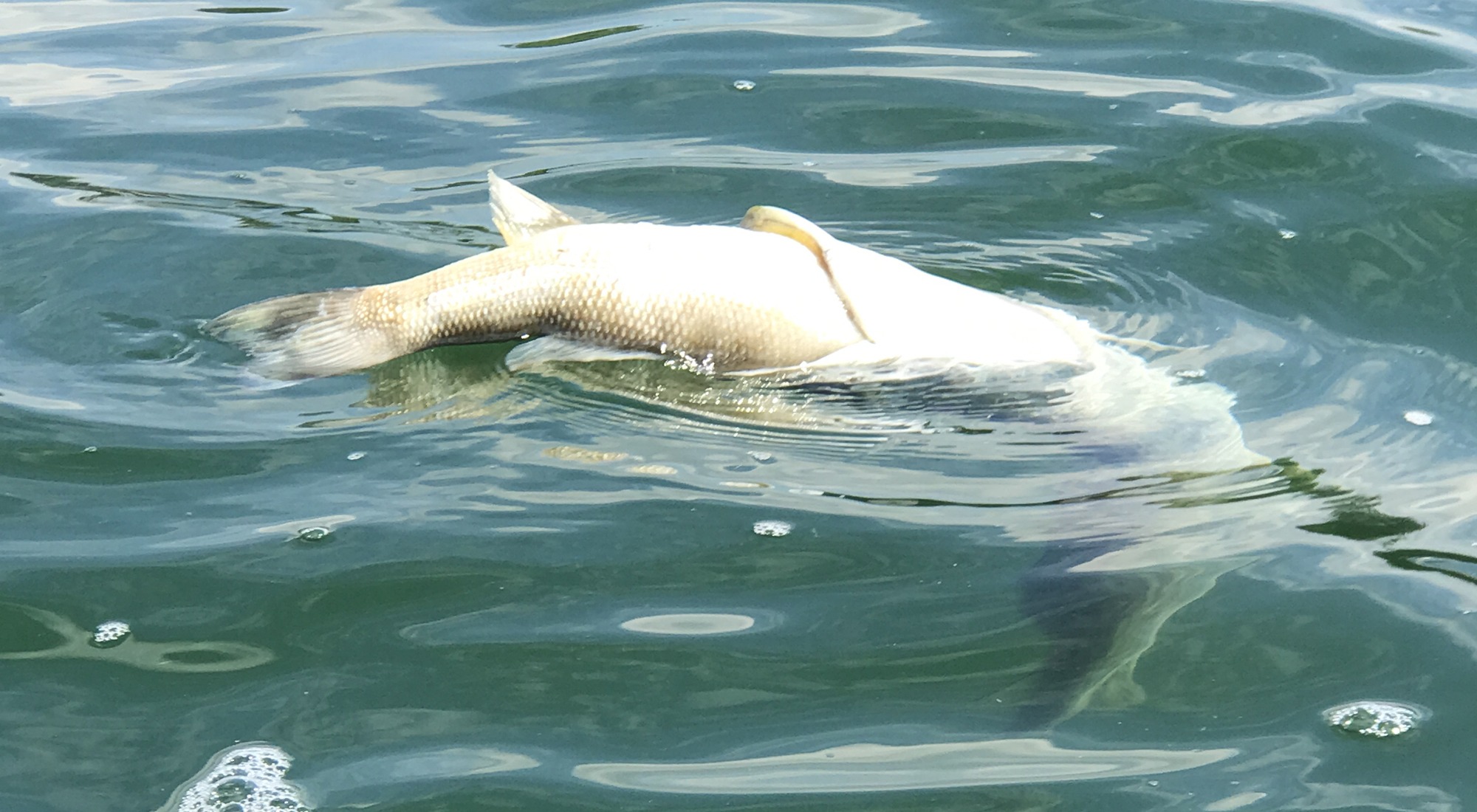Two recent alerts from the Michigan DNR are relevant to Clark Lake.
FISH KILLS
The DNR says it’s normal to find dead fish, turtles, frogs, crayfish and other aquatic in the spring. While such sights can be startling, the Department of Natural Resources says it’s normal. “Winterkill is the most common type of fish kill,” said Gary Whelan, DNR Fisheries Division Research manager. “Winterkill begins with distressed fish gasping for air at holes in the ice and often ends with large numbers of dead fish that bloat” once the ice melts and water warms. Get more on this topic by clicking here.

OAK WILT
Clark Lake has a huge population of oaks, and they have a long history here. Counting the rings of one felled oak tree suggested a 400 year span life span. The DNR warns “wait to prune.”

“From April 15 to July 15, oak trees are at high risk for oak wilt infection, a serious fungal disease that can weaken white oaks and kill red oak trees within a few weeks. During this time of year, flying beetles can carry spores of the fungus from tree to tree. The fungus enters the tree through wounds that are often a result of pruning or storm damage.”
James Wieferich, forest health specialist in the Michigan Department of Natural Resources’ Forest Resources Division says “Once oak wilt gets started, it is expensive to successfully manage and will kill all nearby red oaks over time, if untreated.” The DNR adds “If you have an oak tree that gets damaged during the high-risk period from April 15 to July 15, immediately cover all wounds with tree-wound paint or latex-based paint. Painting tree wounds is not recommended for other trees species as it can reduce the effectiveness of the healing process.”
Red oaks are most susceptible to the disease. These trees have leaves with pointed tips and include black oak, northern red oak and northern pin oak. Trees in the white oak group have rounded leaf edges and include white oak, swamp white oak and bur oak. Symptoms most often appear from late June until September. Affected trees will suddenly begin to wilt from the top down, rapidly dropping leaves, which can be green, brown or a combination of both colors. To prevent the spread, the DNR says don’t move firewood from one state to another.
More on oak wilt by clicking here.











Well, this is interesting as well as informative. Thanks, Rick!